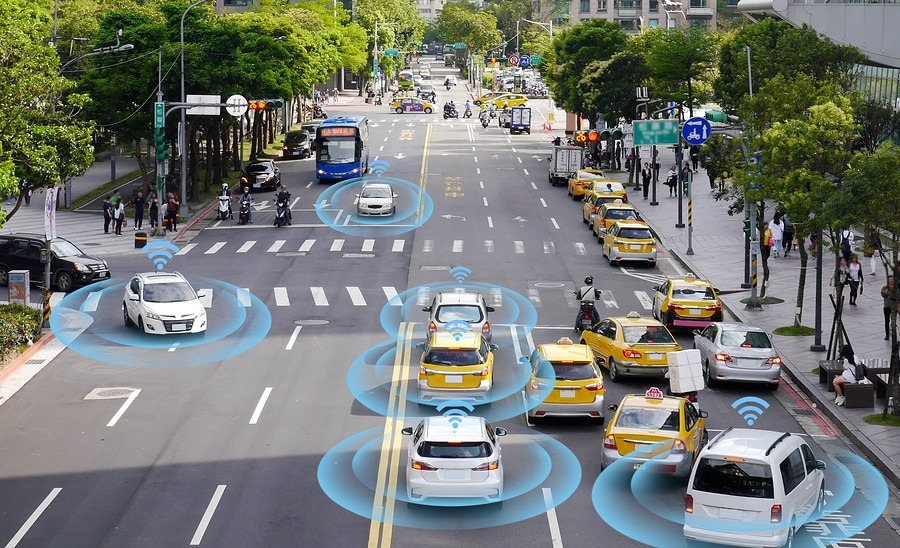We have seen many amazing revolutionary breakthroughs in technology over the last few decades. And there seems to be no sign of it slowing down any time soon. Of all the advances we have seen some of the greatest are demonstrated in our vehicles. From advanced safety features to better comfort controls and enhanced designs there is a lot that has changed in the automotive industry. One of the biggest changes is one that is yet to be seen- the full unveiling of self-driving cars. Some people await the arrival of automation to our vehicles with excitement while others look at it with fear and dread. Both sides have valid argument for or against self-driving vehicles, but it is important to start at the beginning and to understand what we are up against when we are driving on our roadways.
Human Error is Deadly
According to the National Highway Traffic Safety Administration (NHTSA), 90% of all traffic accidents can be blamed on human error. Next, according to the AAA Foundation for Traffic Safety, nearly 80% of drivers expressed significant anger, aggression, or road rage behind the wheel at least once in the past year. Alcohol-impaired driving fatalities accounted for 29% of the total vehicle traffic fatalities in 2015. And, finally, of the roughly 35,000 annual traffic fatalities, approximately 10% (3,477 lives in 2015) are caused by distracted driving. If you remove human error from driving, the potential is there to not only save a significant number of lives, but also dramatically reduce the number of serious injuries associated with traffic accidents. This is the prevailing mindset that has compelled people to work towards automating our vehicles.
Driverless Cars FAQ
When are driverless cars coming?
Some experts say we could have them as early as around 2025 or 2030. We already have some self-driving vehicles but most are still test models and there is no widespread availability to the general public. It will still be a decade or so before these vehicles really start to be on the road en-mass.
How do driverless cars work?
Lots of sensory equipment is used to make these vehicles move and drive themselves. This is including Radar, lasers and cameras along with a GPS and inertial navigation system constantly keeps tabs on speed, position, location, direction, and distance to other items and vehicles around the vehicle.
How much will they cost?
The technology involved in making our current cars self-driving are estimated to add between $70,000 and $100,000 to the current cost of a vehicle. This puts them far out of the price range of the average citizen right now. However, in time as improvements are made the price will come down and be more attainable.
Can they deal with congestion, pedestrians, and work zones?
“So far the prototype and early production models of the driverless cars are pretty good at it. And all of the developers are working to make them better. Sensors on the vehicle register when something is in front of it and will slow down, turn, and navigate around any obstacles that cross its path” (Social Actions).
Will driverless cars be safer?
Experts say yes because of the high number of accidents that are caused by human error. National transportation surveys have shown over 5 million human-caused crashes each year in the US. Removing drunk drivers and other forms of human error and poor judgement can reduce these numbers significantly.
Fears and Concerns
“From ushering in an era of decreased car ownership, to narrowing streets and eliminating parking lots, autonomous vehicles promise to dramatically reshape our cities. But after an Uber-operated self-driving vehicle struck and killed 49-year-old Elaine Herzberg, there are more questions than ever about the safety of this technology, especially as these vehicles are being tested more frequently on public streets” (Curbed). Some people have since argued the safety record for self-driving cars has not been adequately proven and not enough testing has been done. Others claim the push for automated cars is detracting from bigger and more urgent issues such as improving roads and parking and local bridges to improve current traffic problems. Those who are against the idea of self-driving cars often bring up their concern that this will add more vehicles to the road as those who could not drive before are not able to be on the road, further jamming up already crowded roads and streets.
Final Thoughts
Driverless cars are still very much seen as the things of science fiction and for many seem like an impossible dreams. For others they are a hope for a better way of life and a healthier planet. Still others today see them as a dangerous invention that could cause more harm than good. Really only time will well what self-driving cars will bring with them and as we see more and more of them on the road we must be prepared to deal with the consequences- whether they are good or they are bad. We have a lot to look forward to bot also a bit to be cautious about and a little to be warry of. In the next ten years or so we will see what the next chapter in the auto driving vehicles brings to our lives. So now we sit and wait and watch and prepare.
